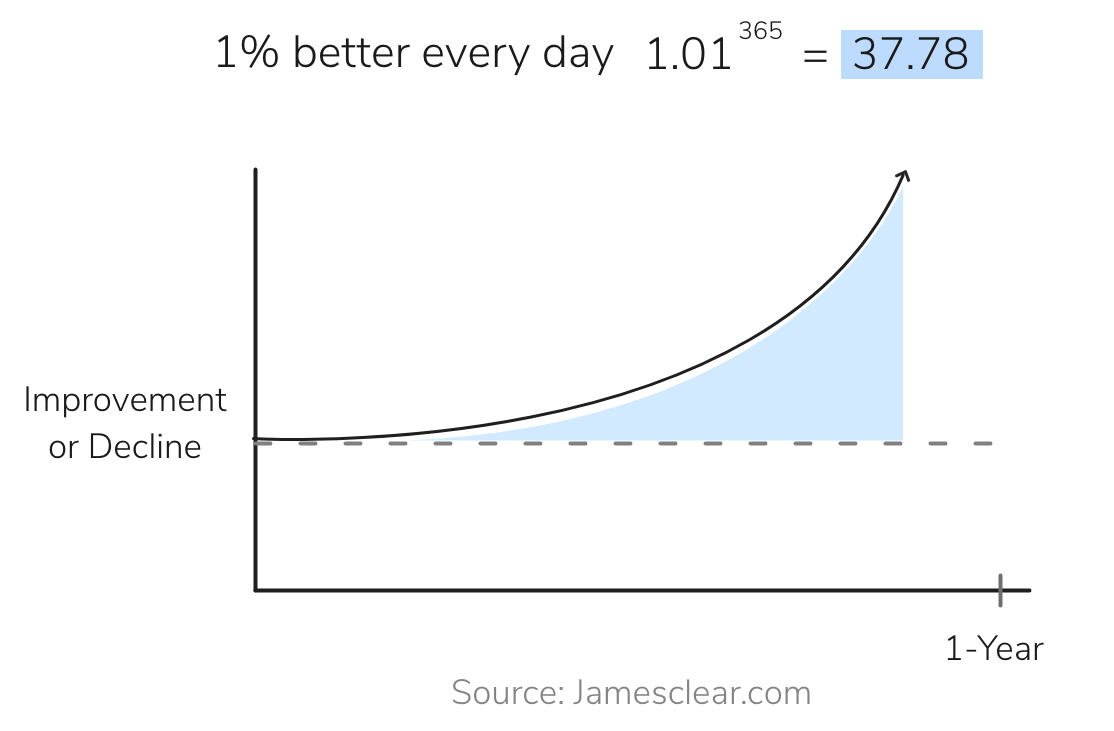
What’s the Optimal Conversion Rate for Your Ecommerce Website?
What is a good conversion rate? What conversion rate should you benchmark your website against? In this Insight we’ll look at what we believe to be the optimal conversion rate for any ecommerce business.
“What is a good conversion rate for our ecommerce website?”
At The Good, we get asked that question all the time. If there’s a list of the top three questions ecommerce VP’s ask conversion optimization specialists, that one has to be in first place.
As with many marketing-related questions, there’s only one correct answer: “One that is always improving.”
But that’s not the answer managers want to hear. They’re seeking affirmation of two things: first, that their conversion rate is performing well, and secondly, that they’re doing as good or better than their competitors.
So, what is a good conversion rate?
In this Insight we’ll be answering that question in full detail. Here’s what you can expect to learn:
- Why the website conversion rate is critical to ecommerce
- What is a good conversion rate for your business?
- Why your most important competitor is you
- The benefit to focusing on marginal gains
- Your website conversion rate and your ROI
Why the Website Conversion Rate Is Critical to Ecommerce
Here’s marketing’s most obvious, yet best-kept secret: conversion rate is the gatekeeper to ecommerce success.
If you have enough budget depth to launch a masterful pay-per-click campaign, you can send thousands of visitors to your ecommerce website daily.
Anyone with a sufficient bankroll can do that.
Just about every business leader we speak with is concerned about getting more traffic, and most are spending more on the advertising budget than on any other phase of marketing.
There’s a problem with the “It’s all in the numbers” philosophy, though: Unless you can convert those visitors – lead them to take the next step along the path from interested prospect to happy customer – then you’ve wasted your time and your money building traffic.
Any page on the internet can buy traffic … but a conversion-optimized website turns that traffic into sales, and a poorly-performing website fails to capitalize on the opportunity.
Your conversion rate can make or break any advertising campaign.
As you’ll see below, those who look closely at the potential of conversion rate optimization (CRO) soon learn it’s not a tool to use, then discard. At its best, conversion rate optimization is an ongoing project that seeks regular boosts in conversion rates and revenues.
Steady progress beats furious effort every time.
What Is a Good Conversion Rate for My Business?
Okay, let’s get down to the question that brought you here. You want to know how well your marketing efforts are doing – especially in relation to the competition.
You get frustrated at spending money to draw traffic to your site, then seeing those visitors leave without making a purchase. Is your paltry conversion rate normal? Or have others found ways to get more and better-targeted traffic?
You’re hoping we’ll give you a peek at what’s really going on – an insider look at the numbers behind digital marketing… and we’re eager to do that. Yet, the conclusion we draw (and hope you’ll adopt) may surprise you.
We’ve collected data from ecommerce businesses, both large and small. We’ve worked closely with ecommerce VPs and their staff to boost conversion rates and grow business. Some of that data is presented as case studies, and we’ll provide access to several of those documents below.
Beyond the numbers, though, we want you to hone in on something truly transformational – a fact that can build new enthusiasm in your ecommerce business and point the way towards phenomenal growth.
Are you ready?
Here it is: the most important business you can compete against is your own.
Here’s Why Your Most Important Competitor Is You
In a long-distance running race, you’ll see the participants assess where they are in relation to the rest of the pack and how far away they are from the leader. That’s part of the race. The most telling part of the event, though, is internal. The runners are pulling from their preparation time and internal willpower to push on and compete.
There are two main reasons most ecommerce roles are concerned about conversion rates:
- So you can measure your business against your competitors
- So you can operate your business more effectively
Hands down, reason number two takes the cake. For the most part, you shouldn’t waste time and money trying to gauge your own success against someone else’s. In the end, it’s how well you leverage the resources you possess that will determine how well you perform.
Yes, routine competitive assessments are an excellent aid to strategic planning, but trying to dig down deeply enough to compare conversion rates is almost certain to be counterproductive.
Rather than invest precious time and resources studying the competition, focus on a deep dive into your own sales funnel and strive for steady improvement.
We’ve found that’s the most effective strategy for success. You can accurately assess your own data, but you’d be hard-pressed to get the competition to share their numbers with you. Charts (like the one shown above) and case studies can get you in the ballpark, but there are too many variables to make nose-to-nose comparisons.
Competing against yourself, though, can pay huge dividends.
The Benefit to Focusing on Marginal Gains
It’s not uncommon for ecommerce businesses to focus on achieving ambitious, long-term goals throughout the year. While long-term goal setting is an important piece to running an ecommerce business, you shouldn’t overlook the value in setting marginal, short-term goals along the way.
All too often we see ecommerce managers overemphasize the importance of one central goal while overlooking the significance of making marginal improvements every day. What we recommend is to focus on making incremental improvements to your conversion rate (or whichever metric you’re seeking to improve) by a small percentage each day.
In the book Atomic Habits, author James Clear makes a strong case for why marginal gains tend to provide for better results in the long-term. By focusing on making incremental improvements every day, you’ll experience far better results than setting a larger goal and working towards achieving it over a longer period of time.
If you can maintain a daily improvement of 1% to any specific aspect of your website for one year, you’ll find yourself thirty-seven times better by the time you’re done. The initial improvements will likely go unnoticed, but compounded over time those improvements will result in measurable success for your business.

Ecommerce managers love to focus on long-term yearly goals, but we find that often those goals are hindering consistent progress. While there’s certainly nothing with having ambitious, long-term goals for your business, you shouldn’t overlook the value of incremental improvements.
James Clear says it best when describing the value of making marginal improvements:
“The truth is that most of the significant things in life aren’t stand-alone events, but rather the sum of all the moments when we chose to do things 1 percent better or 1 percent worse. Aggregating these marginal gains makes a difference.”
Your Website Conversion Rate and Your ROI
We often use a conversion rate calculator to show our clients the ROI growth possibilities with incremental improvements over time. You can access that calculator here: Website Conversion Rates ROI.
Let’s use basic numbers to consider how CRO can affect ROI. To get a feel for what could happen in your business, plug your own data into the calculator.
Suppose your ecommerce website is currently converting (unique) visitors at two percent. That means two out of every one hundred people who visit your site end up purchasing something within the timeframe you’re measuring.
Your average monthly traffic is 500K unique visitors (each visitor is counted once, regardless of how many times any individual returns to the site), and your average order value (AOV) is $150.
Given those numbers, you’re realizing $1.5M in monthly revenue.
After consultation with The Good, you apply the proven principles of conversion rate optimization to coax your conversion rate up by two percent, you’ve now doubled your monthly revenue to $3M.
That would be good news for any business – but that’s not all you can do by working on your own site instead of trying to compare it to someone else’s.
Done well, conversion rate optimization not only converts more of your visitors into buyers, it draws more sales and pushes your average order value up. If your two percent improvement to conversion rate also results in AOV rising to $200, your new monthly revenue will climb up to $4M.
You’ve gone from $1.5M to $4M in monthly revenue… simply by boosting your conversion rate and average order value.
Do you see why those who “get it” and understand what conversion rate optimization can do are eager to develop an ongoing CRO program? Anyone who fails to get excited about the potential of conversion rate optimization simply doesn’t understand the concept.
We often work with digital marketing managers who are struggling to get budgeted for CRO consulting. Invariably, we find education is the key. Once management is given a clear presentation, similar to the one you’ve received here, the lights go on.
Continuous Improvement is Key
Conversion rate optimization is an ongoing process that sometimes uncovers areas where big gains can be made quickly, but most often works to make incremental improvements over time.
Is your current conversion rate high enough? Probably not. You may not be able to double revenue overnight, but you can certainly do more with what you have. That is the goal of conversion rate optimization. You’re already investing plenty of money in advertising… why not make the most of it?
At The Good, we trust in the power of marginal gains to help optimize ecommerce websites for a better user-experience. If you’re interested in improving your website’s conversion rate but aren’t sure where to start, you might consider scheduling a free landing page teardown where a member of our strategy team will provide you with several actionable recommendations for you to start implementing on your site right away.

About the Author
Jon MacDonald
Jon MacDonald is founder and President of The Good, a digital experience optimization firm that has achieved results for some of the largest companies including Adobe, Nike, Xerox, Verizon, Intel and more. Jon regularly contributes to publications like Entrepreneur and Inc.